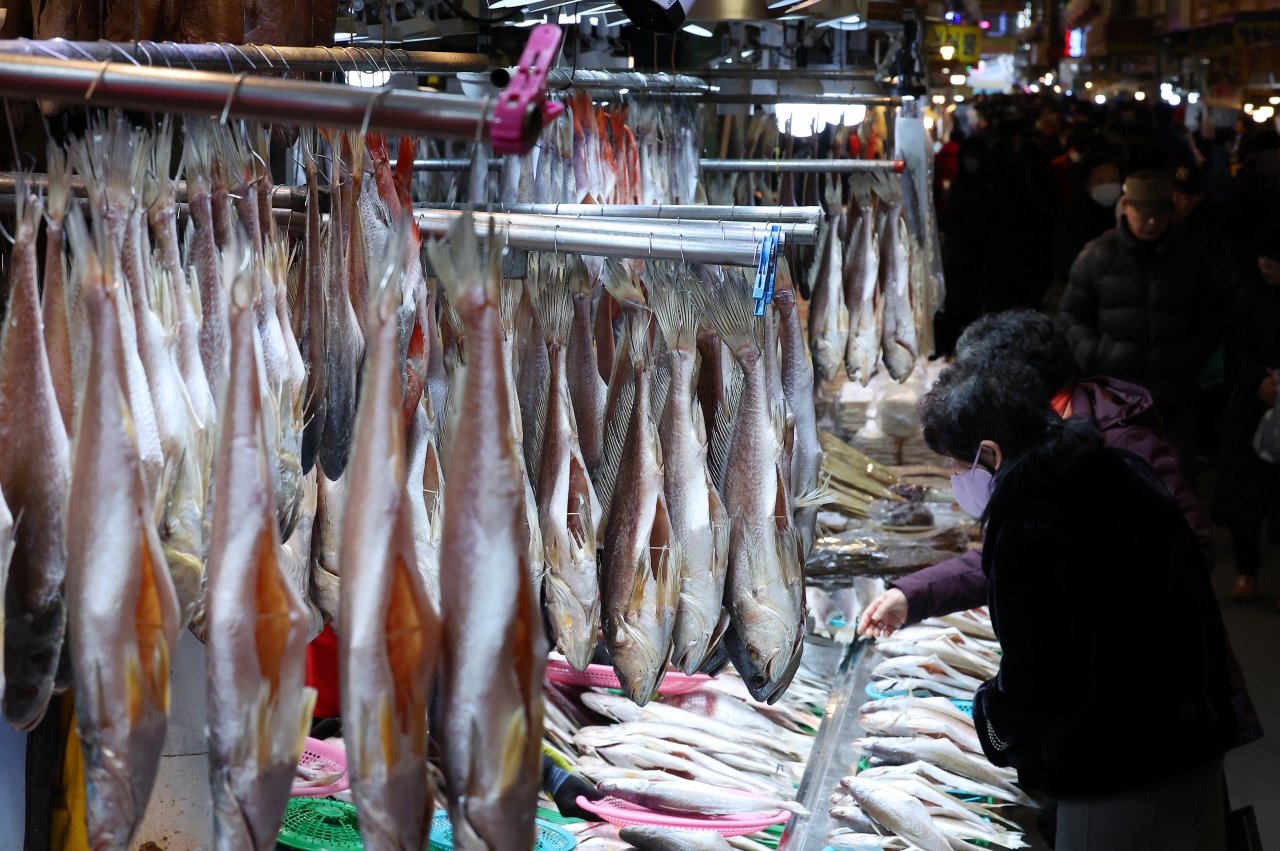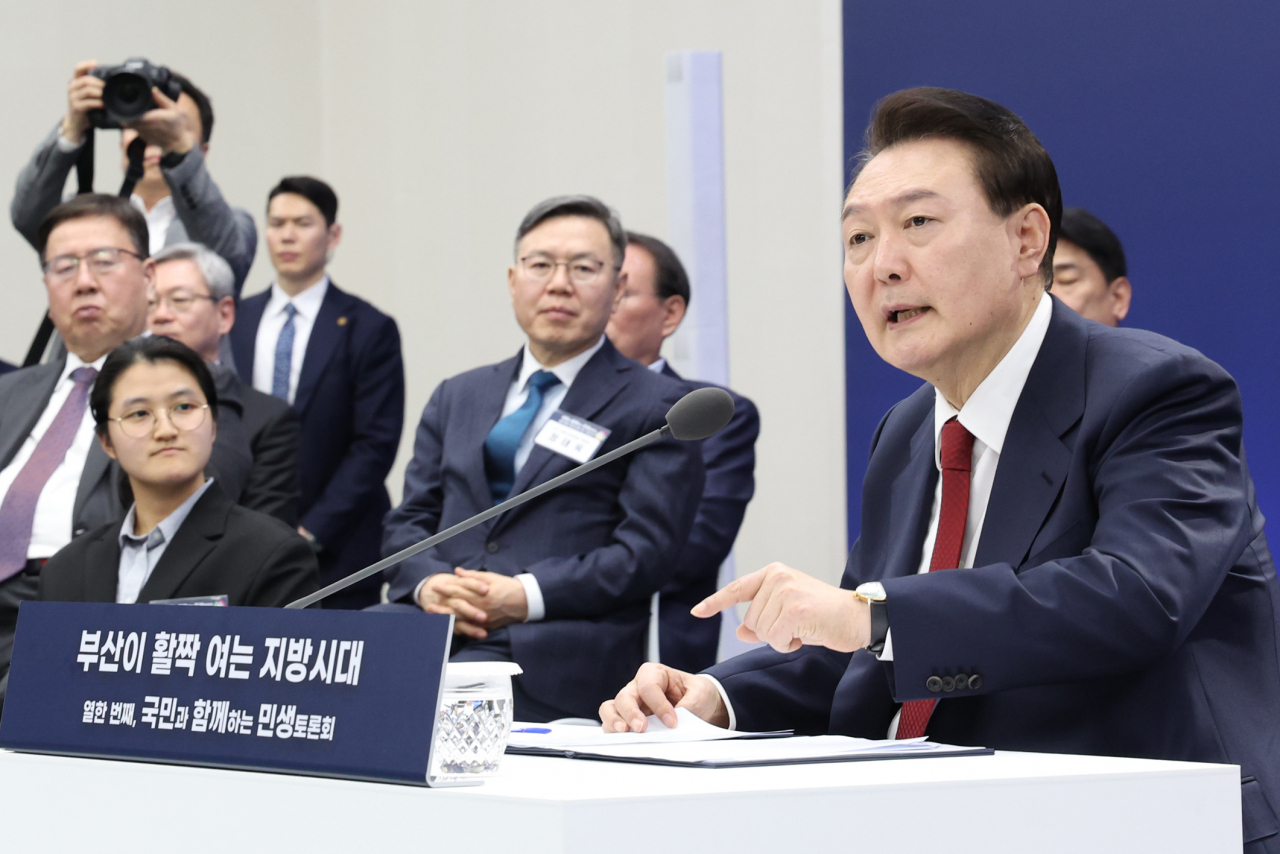Despite failed Expo bid, Yoon pushes for Busan upgrade
President says rebalancing national growth key to recovery in fertility rate
By Son Ji-hyoungPublished : Feb. 13, 2024 - 16:35

South Korea on Tuesday announced a set of measures to boost Busan's economic growth, bolster job creation and improve access to key urban infrastructure, about three months after the city lost its bid to host the 2030 World Expo.
Along with the announcement, President Yoon Suk Yeol held a public debate the same day at Busan City Hall, where he said the concentration of the population, companies and talent in the Greater Seoul area, coupled with the excessive competition in society, has "caused a seriously low fertility rate in the country."
It was the 11th public debate presided over by Yoon, which has taken place instead of his New Year policy briefing since January. The debate was the first to be held outside of the Greater Seoul region.
Yoon emphasized that increasing the fertility rate to at least 1 or above can be solved by rebalancing national growth. South Korea recorded a fertility rate of 0.78 per woman in 2022, far below the replacement rate of 2.1 births needed to maintain a stable population. The fertility rate is projected to decline further to 0.65 in 2025.
The annual gross domestic product in the Seoul Metropolitan area accounted for over half of the nationwide figure from 2014 to 2022, as 27 million people out of the total population of over 50 million live there. The rest of Korea's regions accounted for less than half of total economic output over the same period, according to the committee citing government data.
Moreover, from 2016 to 2023, the southeastern region -- encompassing Busan, Ulsan and South Gyeongsang Province -- experienced a population drain of 317,000 people, while the Greater Seoul area saw an influx of 385,000 people over the cited period. Busan has a population of 3.29 million as of January.

Also on Tuesday, a presidential committee unveiled the progress that Busan, the world's sixth-largest seaport by container throughput, has achieved so far to step up its economy, and vowed to proceed further to turn the city into a national development axis.
The ongoing plans that cost over 20 trillion won ($15 billion) combined to build a new airport by 2029 on Gadeok-do, an island off the coast of the port city, and transform an old seaport called North Port into an industrial and cultural complex by 2030 will generate a combined 64 trillion won in potential revenue and create 175,000 jobs, according to the pangovernmental announcement led by the Presidential Committee for Decentralization and Balanced Development.
These projects, coupled with ongoing efforts to pass a special bill, which was proposed in January through legislators' bipartisan endorsements, will help the port city promote itself as "a hub of logistics, finance and high-tech industry," all propped up by a set of deregulatory measures, according to the president
The deregulatory measures will also support the establishment of new educational institutions for foreigners, such as international schools.
During the public debate, Busan Mayor Park Heong-joon stressed a need for the port city to ease regulations, taxation, visa restrictions and the language barrier.
These projects will come in conjunction with projects to relocate the headquarters of the state-owned Korea Development Bank from Seoul to Busan; expand financial support to companies based in the southeastern region; build a new medical center dedicated to pediatrics; renovate the Sajik Baseball Stadium; and redevelop space for elevated railways which will see them replaced by new underground rail lines.



















